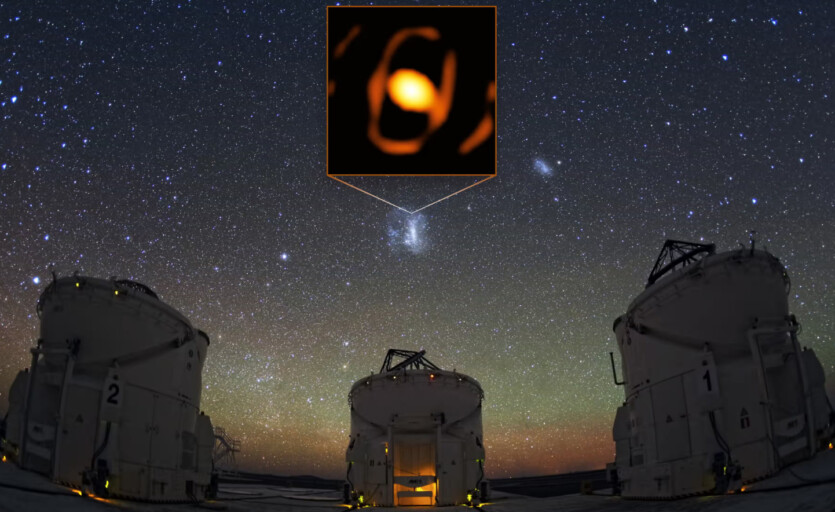
Astronomers have for the first time made an enlarged image of a star’s death beyond the Milky Way. The Very Large Telescope Interferometer (VLTI) “saw” the supergiant WOH G64.
WOH G64 is located at a staggering distance of 160,000 light years in the Large Magellanic Cloud, a dwarf galaxy companion to the Milky Way. Astronomers have known about the existence of this star for some time, it has been nicknamed the “hippo star”, as it is an incredible 2000 times larger than the Sun.
The VLTI “saw” the star in such detail that it could detect a cocoon of gas and dust around it. The ejection of material indicates that WOH G64 is dying, is in the final stage of its existence, which will eventually lead to a powerful supernova explosion.
Astronomers have made dozens of similar images of stars in the Milky Way, but have not yet been able to capture a star outside our galaxy with a similar level of detail. To get an actual image of WOH G64, researchers had to wait from the mid-zero years until the development of the second generation VLTI telescope named GRAVITY, which combines light from four VLT telescopes to create images of faint objects with high sensitivity.
“We have found that the star has undergone significant changes over the last 10 years, giving us a rare opportunity to observe its life in real time,” says one of the researchers, Gerd Weigelt, a professor of astronomy at the Max Planck Institute.
Approaching the final moments of their lives, red supergiants shed outer layers of gas and dust in a process that can last thousands of years. Keele Observatory Director Jakko van Loon has been observing WOH G64 for the last three decades: “This star is one of the most extreme of its kind, and any sudden changes can bring it closer to an explosive end.”
WOH G64 is dimming due to layers of stellar material it is shedding, creating an egg-like shell around it. The cocoon of strange shape could also have been the result of the gravitational influence of an undetected companion star nearby.
This is the first such image of WOH G64, but perhaps there will not be too many more in the future. The hippo star continues to eject gas and dust, and thus becomes dimmer, which can complicate observations. Likely, the future tool GRAVITY+ will be able to facilitate the acquisition of images.
The study was published on November 21 in the journal Astronomy & Astrophysics.
Юпітер в деталях: NASA показало нові зображення найбільшої планети Сонячної системи
Source: Space.com



Spelling error report
The following text will be sent to our editors: